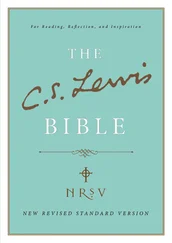[2] Since the value type is usually either char or wchar_t , the library introduces two abbreviations: crope is a typedef for rope , and wrope is a typedef for rope .
[3] Rope::reference is not value_type& , but a proxy type. In fact, reference is a typedef for the nested class charT_ref_proxy . Const_reference , however, is simply const value_type& . Similarly, const_pointer is just const value_type* but pointer is a proxy type. If r is an object of type reference , then &r is of type pointer .
[4] Note that the return value of substr is conceptually a distinct rope : the two rope s may share storage, but this is a hidden implementation detail. If you modify a rope returned by substr , this will not change the value of the original rope .
[5] The final const qualifier in the member function c_str() is conceptually slightly inaccurate in the interest of conformance to the basic_string interface in the draft C++ standard; the rope is updated to cache the converted string.
[6] Concurrent calls to c_str() are allowed; the cache is updated atomically.
See also
Random Access Container, Sequence, vector , sequence_buffer
Categories: containers, adaptors
Component type: type
Description
A stack is an adaptor that provides a restricted subset of Container functionality: it provides insertion, removal, and inspection of the element at the top of the stack. Stack is a "last in first out" (LIFO) data structure: the element at the top of a stack is the one that was most recently added. [1] Stack does not allow iteration through its elements. [2]
Stack is a container adaptor, meaning that it is implemented on top of some underlying container type. By default that underlying type is deque , but a different type may be selected explicitly.
Example
int main() {
stack S;
S.push(8);
S.push(7);
S.push(4);
assert(S.size() == 3);
assert(S.top() == 4);
S.pop();
assert(S.top() == 7);
S.pop();
assert(S.top() == 8);
S.pop();
assert(S.empty());
}
Definition
Defined in the standard header stack, and in the nonstandard backward-compatibility header stack.h.
Template parameters
| Parameter |
Description |
Default |
T |
The type of object stored in the stack. |
|
Sequence |
The type of the underlying container used to implement the stack. |
deque |
Model of
Assignable, Default Constructible
Type requirements
• T is a model of Assignable.
• Sequence is a model of Back Insertion Sequence.
• Sequence::value_type is the same type as T .
• If operator== is used, then T is a model of Equality Comparable
• If operator< is used, then T is a model of LessThan Comparable.
Public base classes
None.
Members
| Member |
Where defined |
Description |
value_type |
stack |
See below. |
size_type |
stack |
See below. |
stack() |
Default Constructible |
The default constructor. Creates an empty stack . |
stack(const stack&) |
Assignable |
The copy constructor. |
stack& operator=(const stack&) |
Assignable |
The assignment operator. |
bool empty() const |
stack |
See below. |
size_type size() const |
stack |
See below. |
value_type& top() |
stack |
See below. |
const value_type& top() const |
stack |
See below. |
void push(const value_type&) |
stack |
See below. |
void pop()[3] |
stack |
See below. |
bool operator==(const stack&, const stack&) |
stack |
See below. |
bool operator<(const stack&, const stack&) |
stack |
See below. |
New members
These members are not defined in the Assignable and Default Constructible requirements, but are specific to stack .
| Member |
Description |
value_type |
The type of object stored in the stack . This is the same as T and Sequence::value_type . |
size_type |
An unsigned integral type. This is the same as Sequence::size_type . |
bool empty() const |
Returns true if the stack contains no elements, and false otherwise. S.empty() is equivalent to S.size() == 0 . |
size_type size() const |
Returns the number of elements contained in the stack . |
value_type& top() |
Returns a mutable reference to the element at the top of the stack. Precondition: empty() is false . |
const value_type& top() const |
Returns a const reference to the element at the top of the stack. Precondition: empty() is false . |
void push(const value_type& x) |
Inserts x at the top of the stack. Postconditions: size() will be incremented by 1 , and top() will be equal to x . |
void pop() |
Removes the element at the top of the stack. [3] Precondition: empty() is false . Postcondition: size() will be decremented by 1 . |
bool operator==(const stack&, const stack&) |
Compares two stacks for equality. Two stacks are equal if they contain the same number of elements and if they are equal element-by-element. This is a global function, not a member function. |
bool operator<(const stack&, const stack&) |
Lexicographical ordering of two stacks. This is a global function, not a member function. |
Notes
[1] Stacks are a standard data structure, and are discussed in all algorithm books. See, for example, section 2.2.1 of Knuth. (D. E. Knuth, The Art of Computer Programming. Volume 1: Fundamental Algorithms , second edition. Addison-Wesley, 1973.)
[2] This restriction is the only reason for stack to exist at all. Note that any Front Insertion Sequence or Back Insertion Sequence can be used as a stack; in the case of vector, for example, the stack operations are the member functions back , push_back , and pop_back . The only reason to use the container adaptor stack instead is to make it clear that you are performing only stack operations, and no other operations.
Читать дальше











